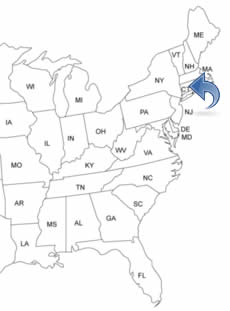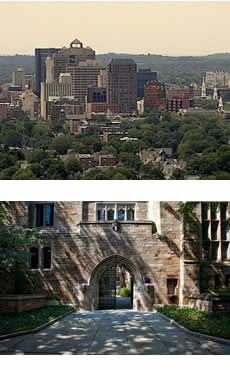CONNECTICUT PEOPLE SEARCH!
- ✔ Contact Info
- ✔ Phone Numbers
- ✔ Criminal Records
- ✔ Income Info
- ✔ Neighbors
- ✔ People's Age
- ✔ Property Ownership
- ✔ And Much More
New Haven, Connecticut
New Haven is located in the south-central part of Connecticut and is the second largest city in the U.S State of Connecticut. New Haven is perhaps best known as the home of Yale University. According to the Hartford Courant, New Haven has more pedestrian activity than any place between New York City and Boston and also has a burgeoning nightlife scene. New Haven was probably the first planned city in the USA.
To See And To Do In New Haven
- Yale University
- Lighthouse Point Park
- Fort Nathan Hale Park
- Peabody Museum of Natural History at Yale University
- Shoreline Trolley Museum
- Ikea Home Furnishings
- The Green Public Park
- Long Wharf Theater
History Of New Haven - Timeline
In 1614, European explorers and traders visited the area. In 1638, New Haven became the first planned city in America. 500 people from England sailed into the harbor. They settled and called the place Quinnipiac, after the Quinnipiac tribe of Native Americans. They completed the New Haven Green park and built a prison, a watch-house, a school, and they also used it as a burial ground for the residents. In 1640, a government had been established and the town was renamed Newhaven. In 1641, about 800 people lived in the town. In 1659, the Fort Nathan Hale was built. In 1660, the Hopkins School was established. In 1664, the town became a part of Connecticut.
In 1700, the Morris House was built. In 1718, Collegiate School was moved from the town Old Saybrook to New Haven and the name changed to Yale College. In 1779, British forces attacked the town and destroyed homes, stores, churches, supply houses, ships and other buildings. New Haven was incorporated as a city in 1784. In 1796, the Grove Street Cemetery was built.
In 1800, about 4,000 people lived in the city. In 1805, the Five Mile Point Light was constructed. In 1807, the stone building, John Cook House, was built. In 1812, the Dwight Street Historic District was built, and the daily newspaper, the New Haven Register, was founded. In 1836, Samuel Colt invented the automatic revolver in Whitney's factory in the city.
In 1839, the court case United States versus The Amistad took place in the city. People from Africa had been captured by Spaniards with the intention to sell them as slaves in Cuba. After killing the captain and the cook, the Africans took control of the ship, The Amistad. They sailed the ship to Long Island where they were taken into custody and then interned at New Haven. In 1840, the trial court found that the transport of the Africans across the Atlantic had been illegal. The movie "Amistad", directed by Steven Spielberg, is based on the story.
In 1849, the railroad came. In 1859, the Hillhouse High School was founded. New Haven's economy flourished during the Civil War era. The city's carriage industry became for many years one of the nation's largest. In 1861, the City Hall and County Courthouse was built, and the Police Department was formed, and one year later, in 1862, the Fire Department was established.
In 1866, the Peabody Museum of Natural History was established. In 1868, the writer Charles Dickens visited the city. In 1877, the Soldiers and Sailors Monument was built, and the city had telephones. In 1882, the Quinnipiac Brewery building was completed. In 1883, the Welch Training School was built. In 1894, the Plymouth Congregational Church was built. In 1898, the Christ Church was completed.
In 1900, more than 108,000 people lived in the city. In 1913, the Yale Bowl football stadium opened. In 1914, the Shubert Theatre opened. In 1920, the Union Station opened. In 1924, the Lincoln Theatre was built. In 1926, the New Haven Arena was built. In 1943, the musical Oklahoma, by Rodgers and Hammerstein, premiered at the Shubert Theatre. In 1946, the former president George W. Bush was born in the city. In 1970, thousands of people demonstrated when members of the Black Panther Party were prosecuted in the city for murder and criminal conspiracy.

